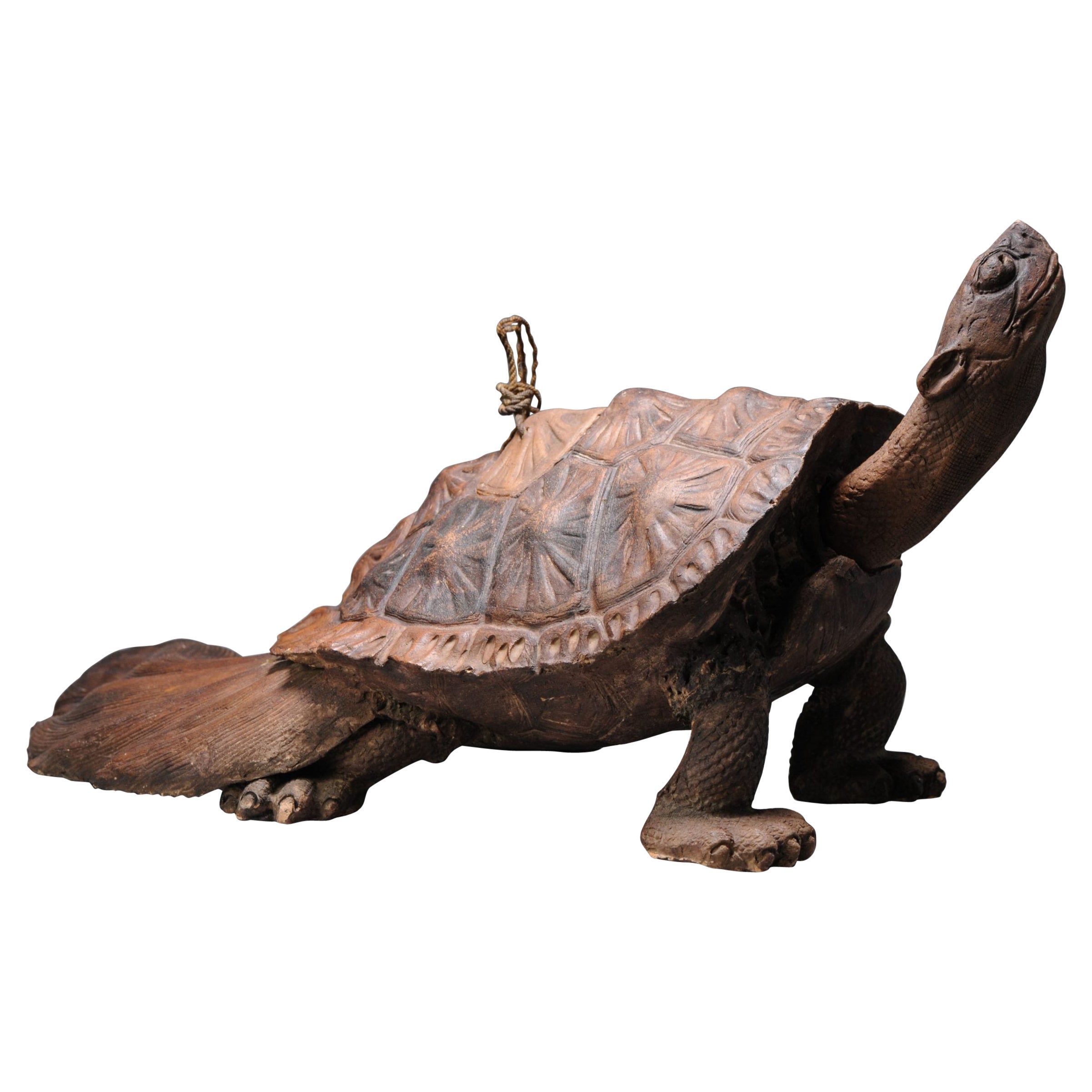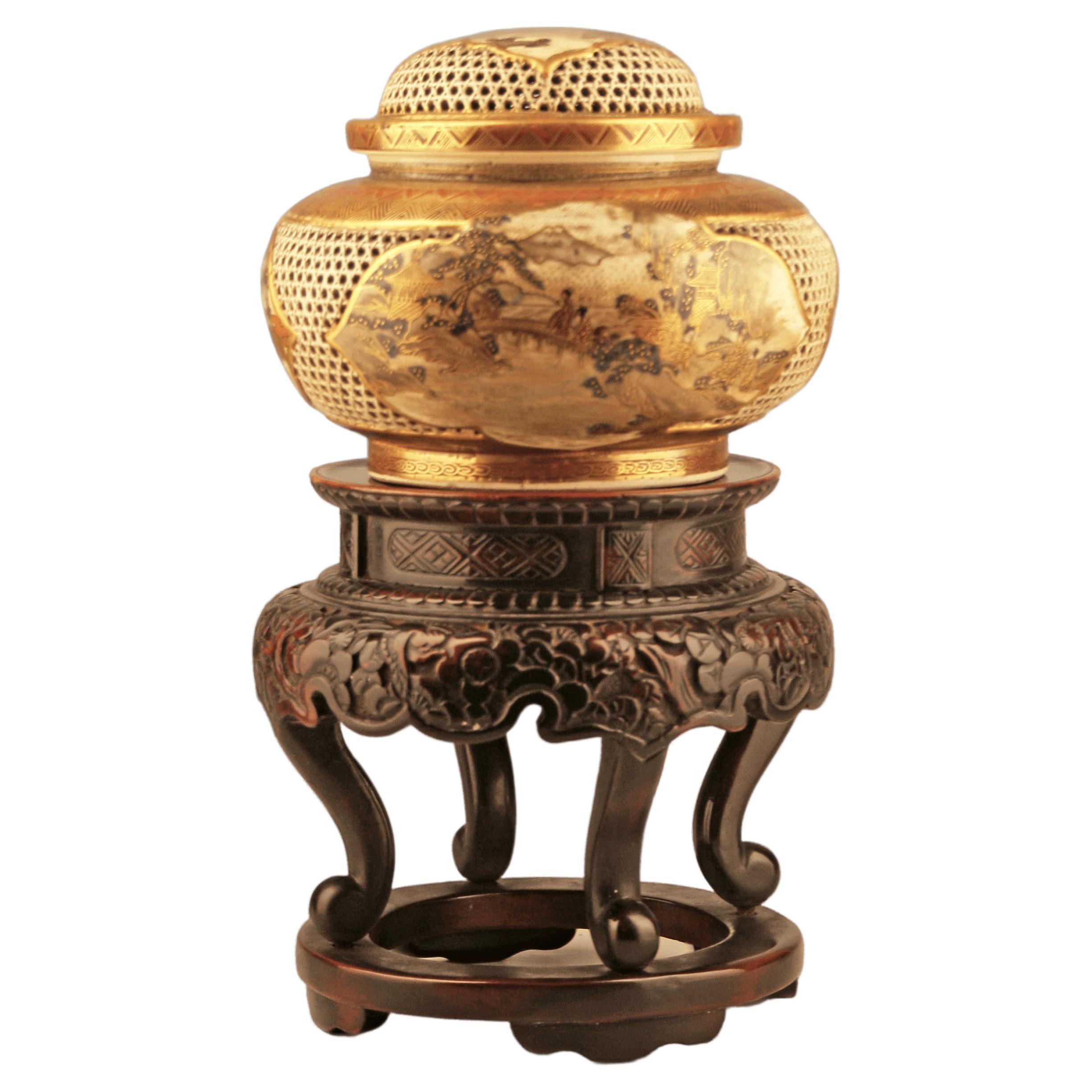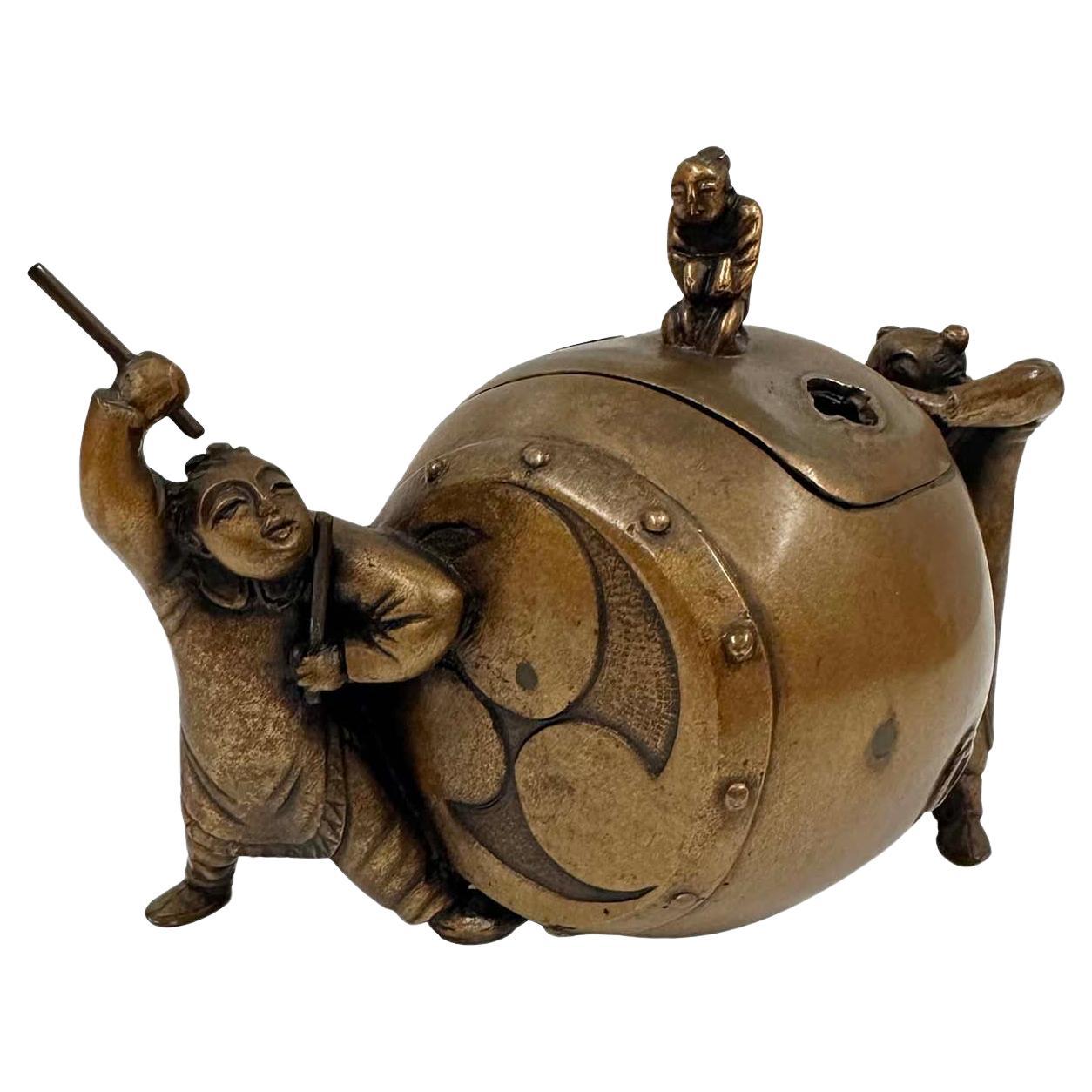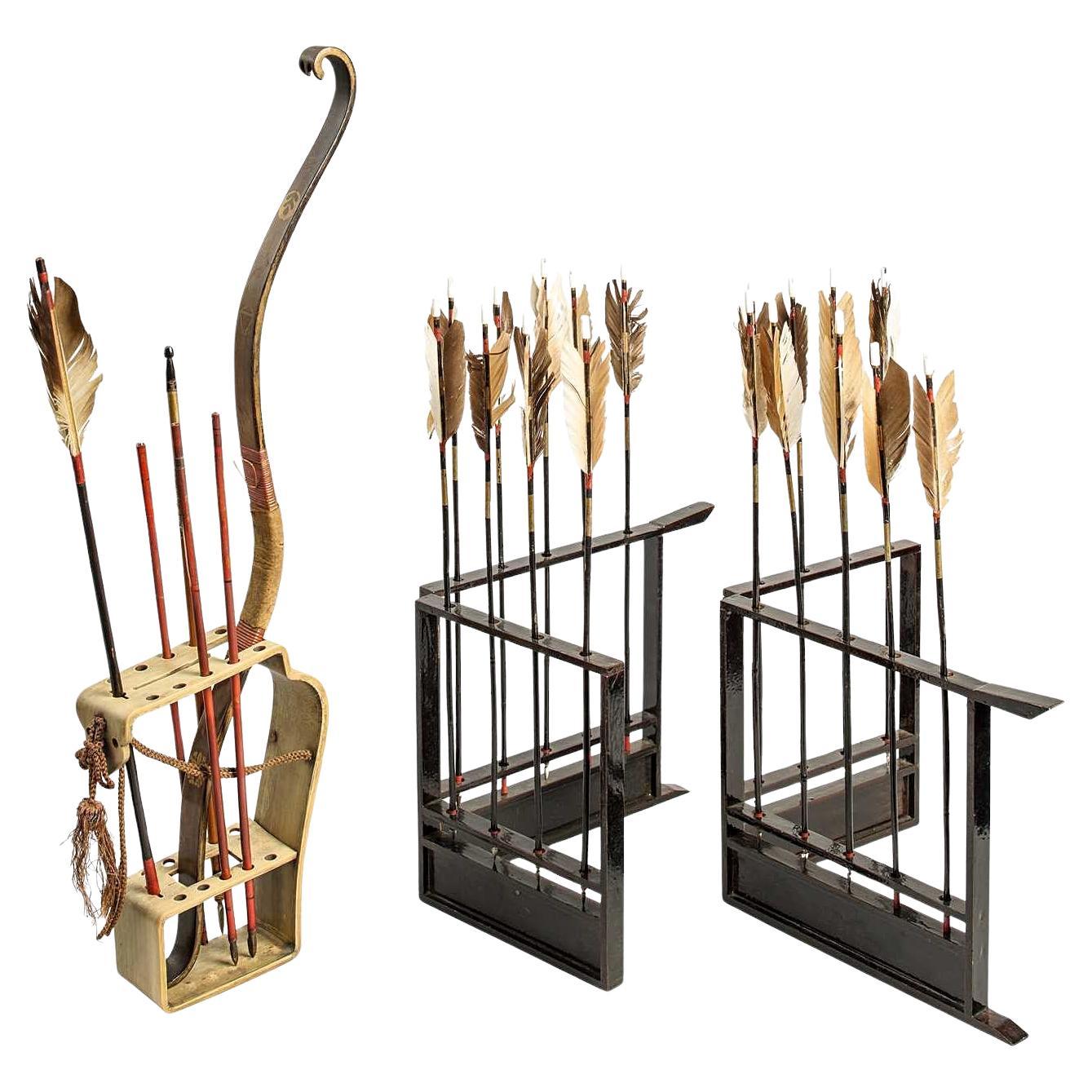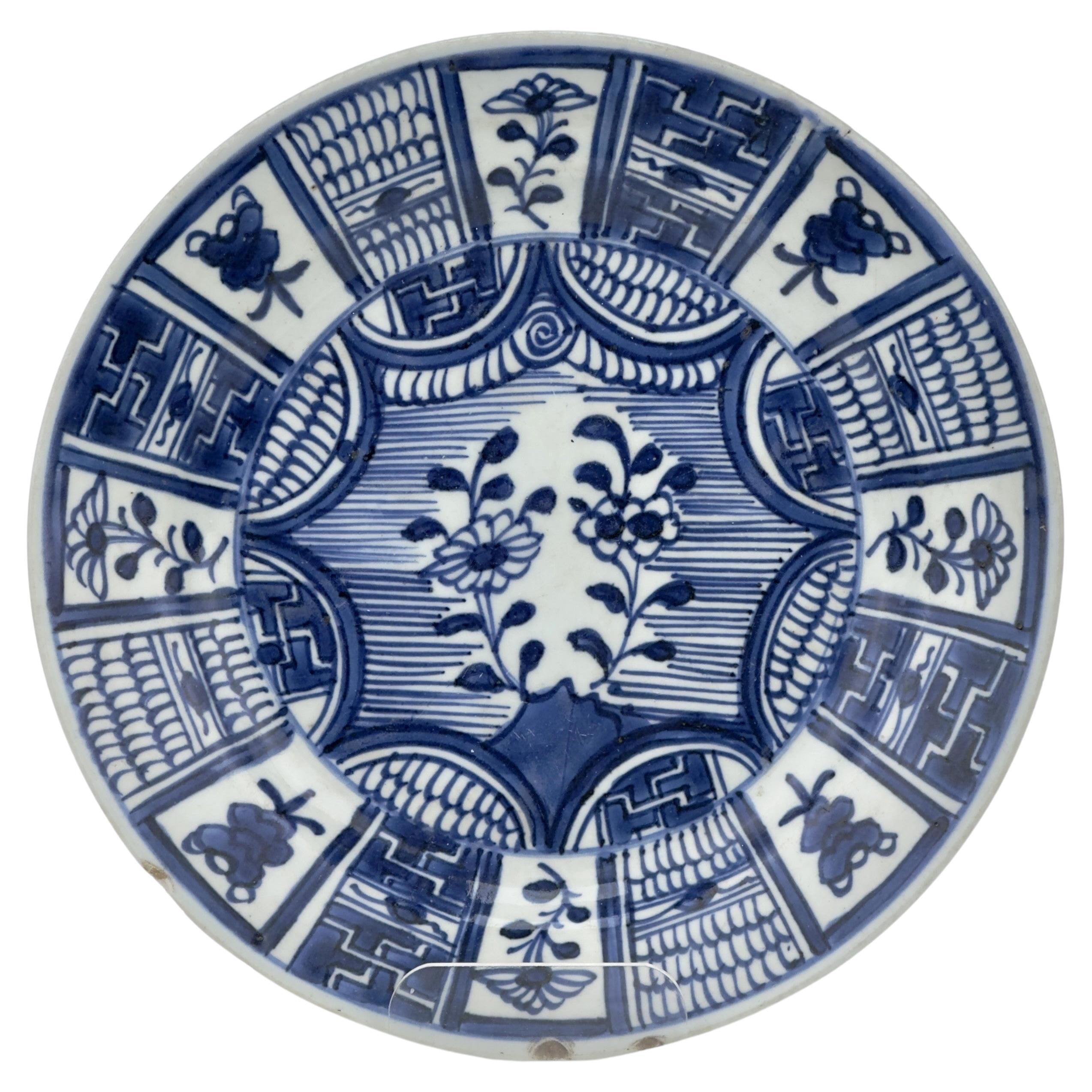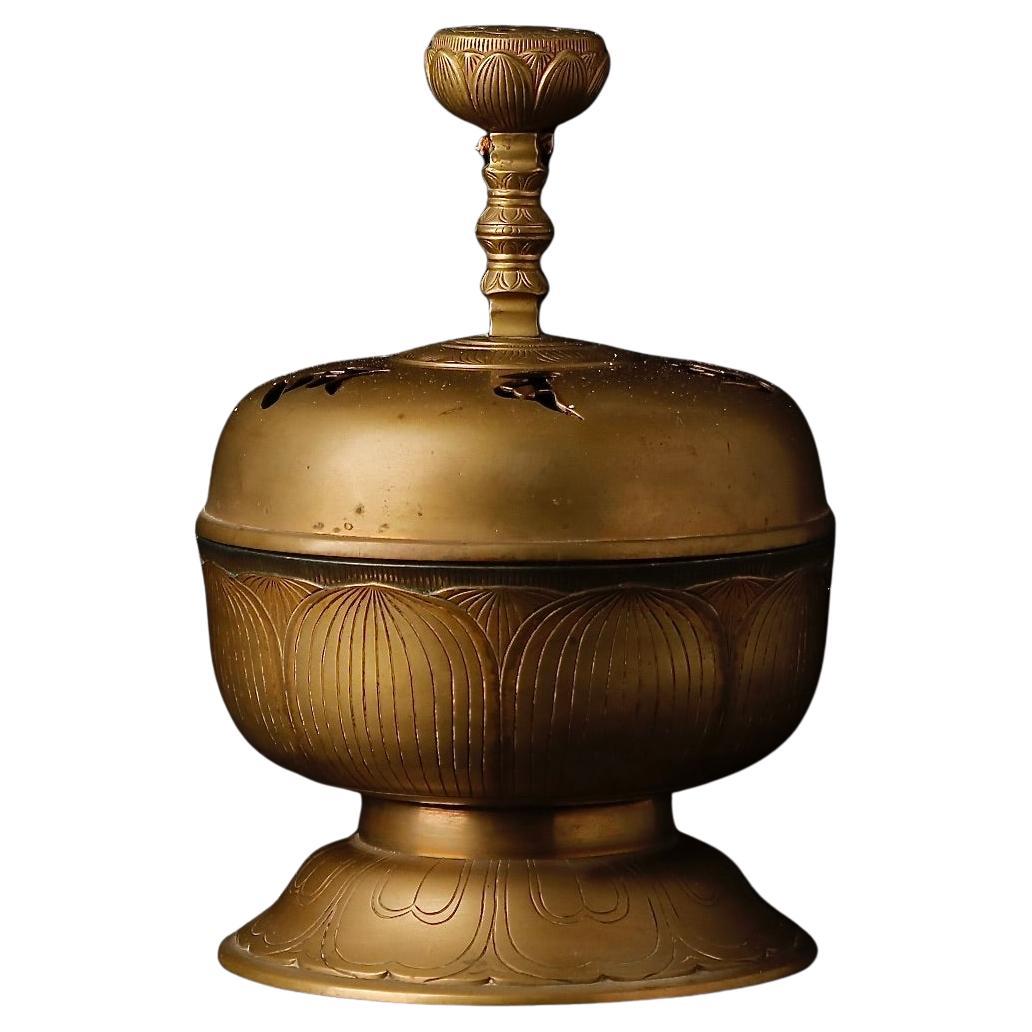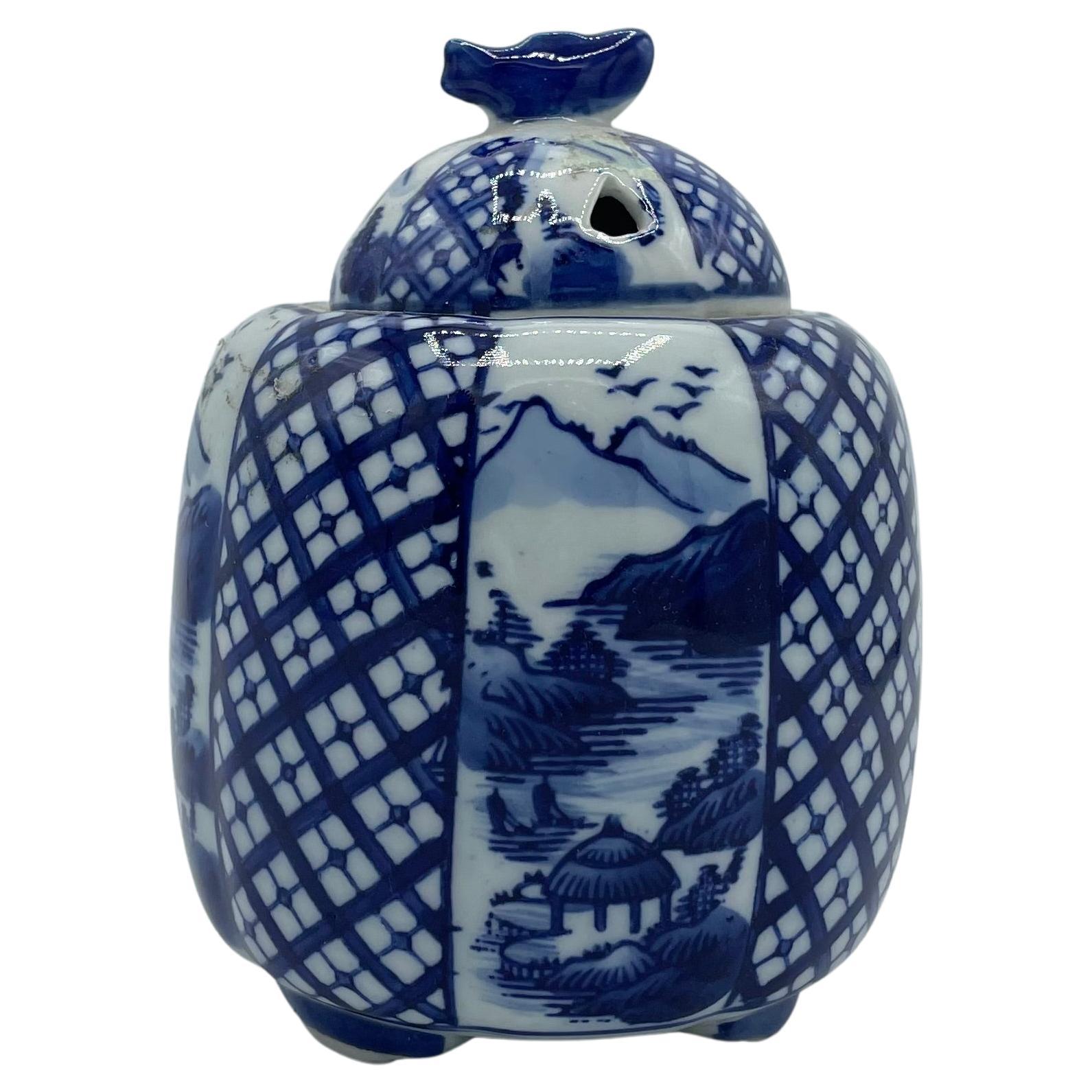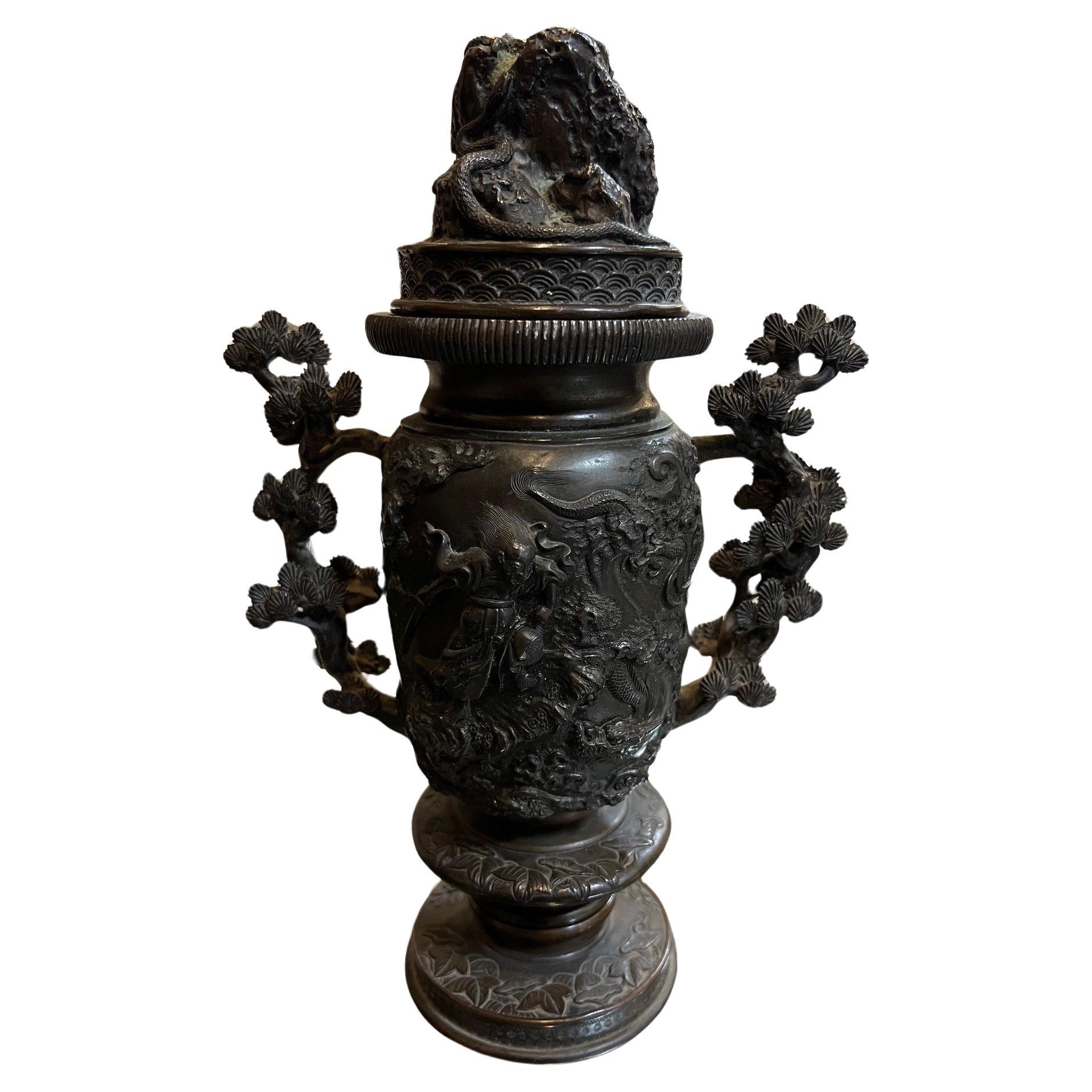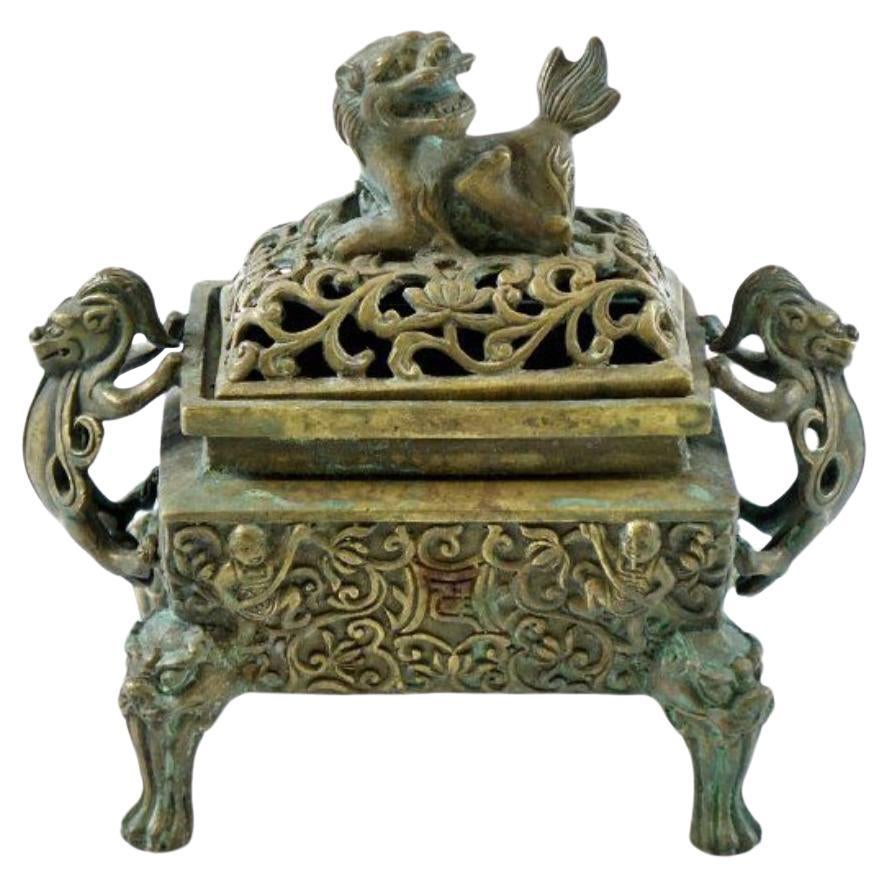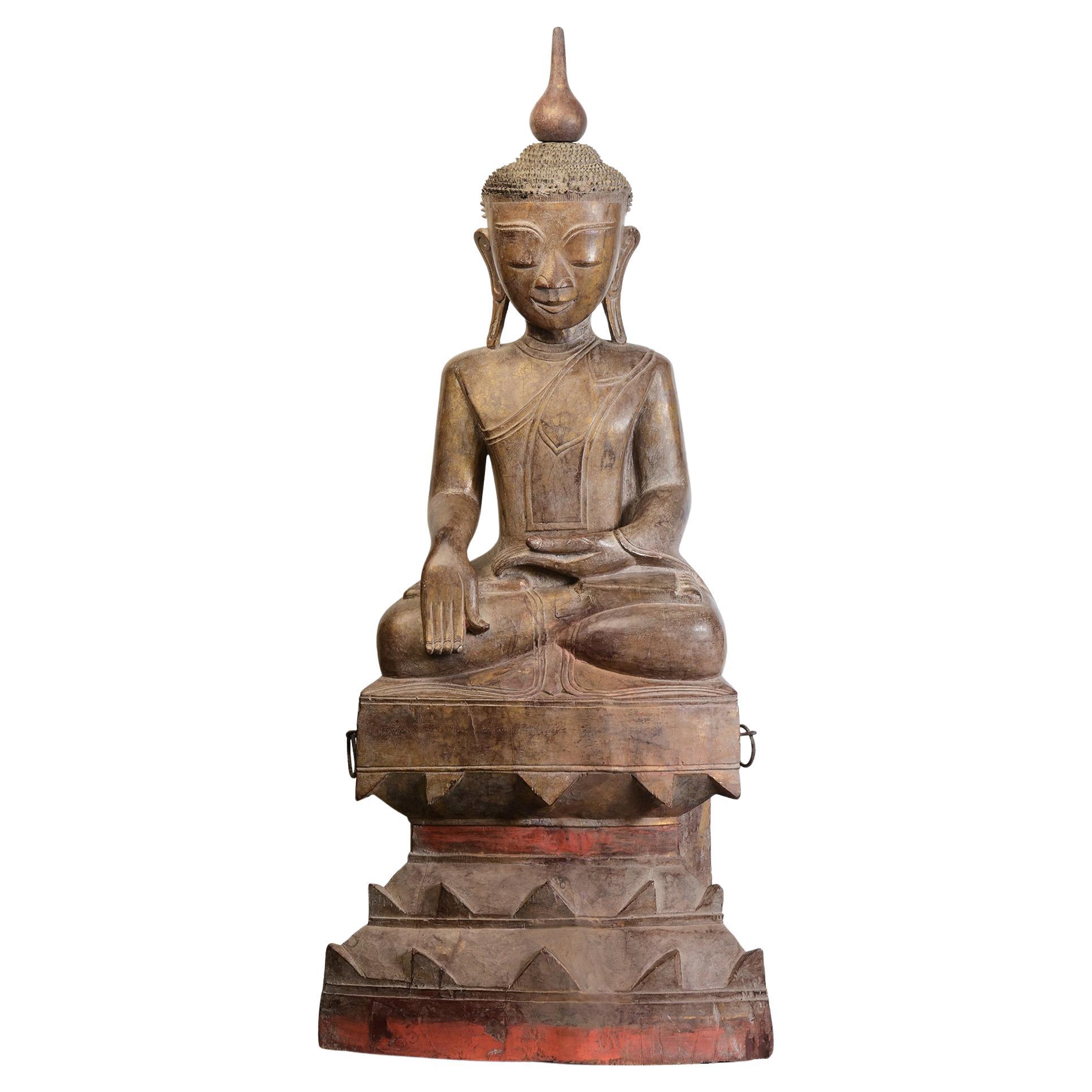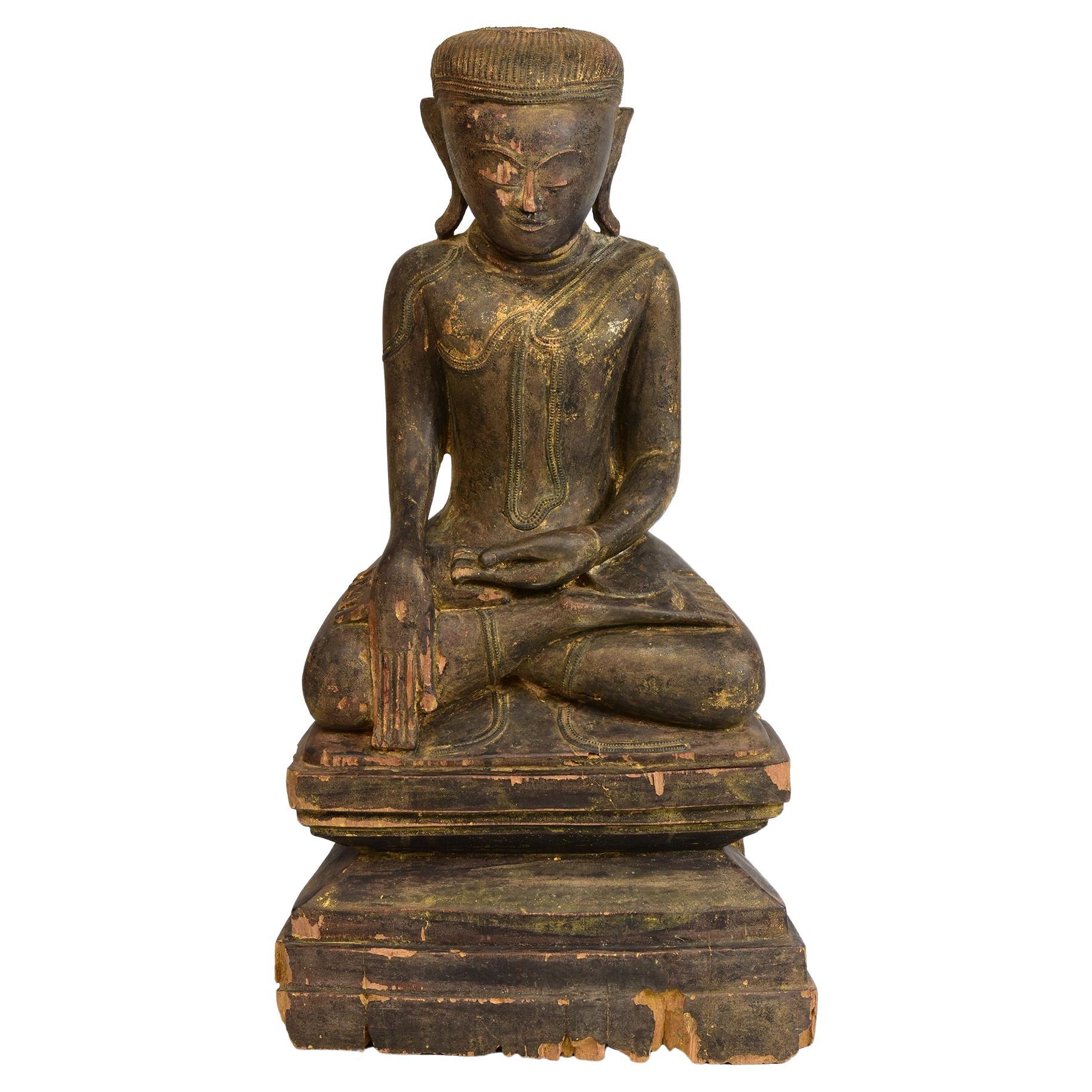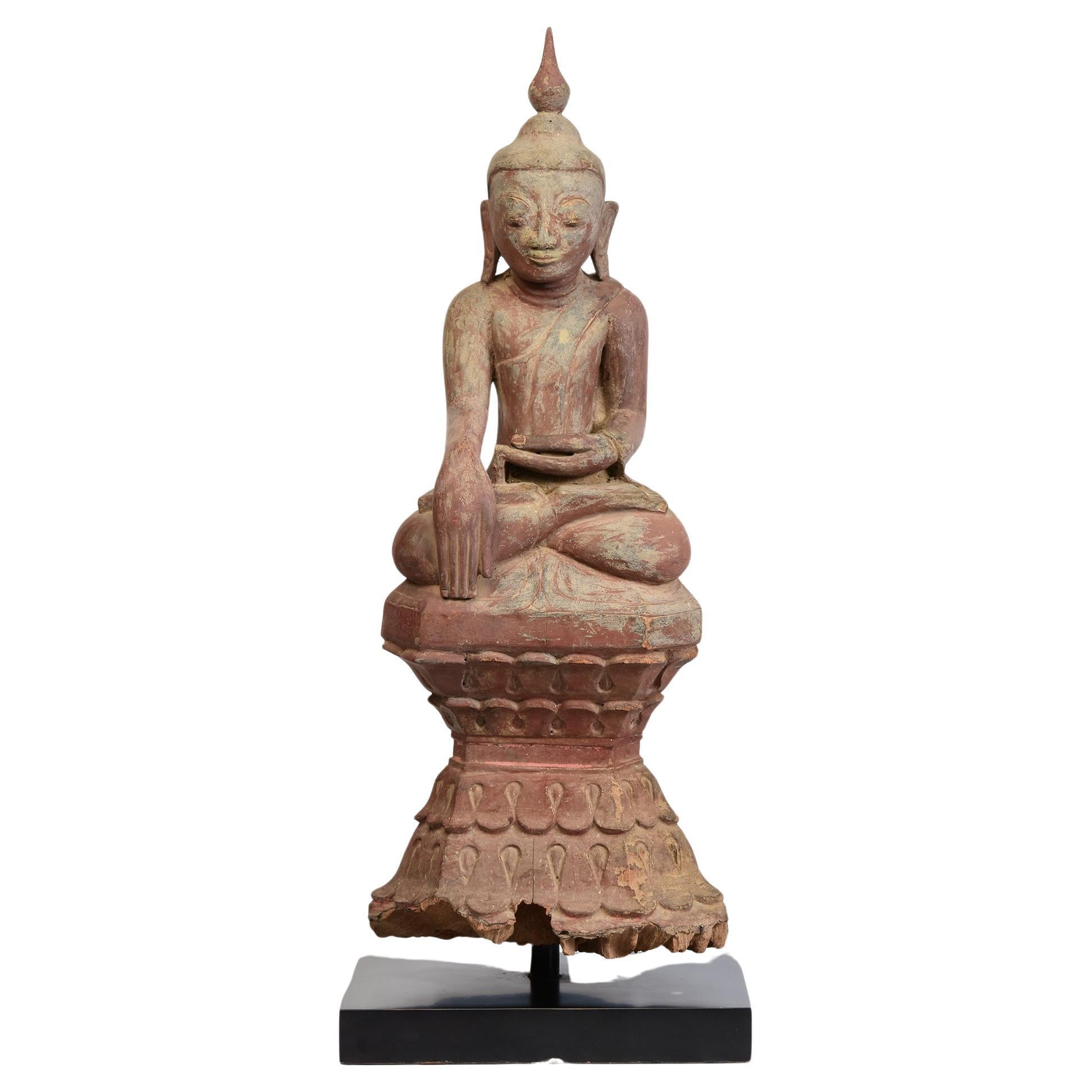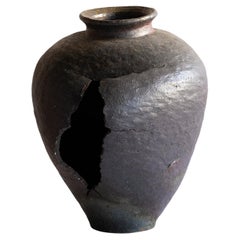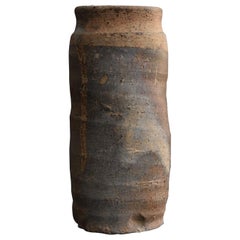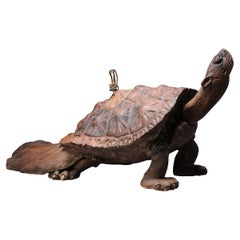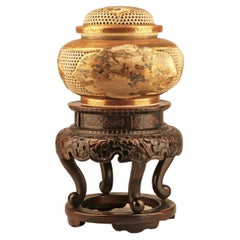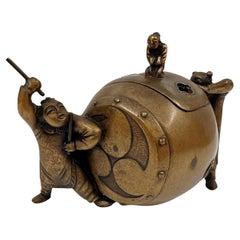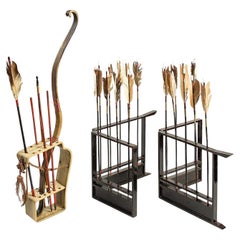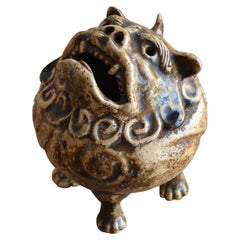
Japanese antique pottery lion-shaped incense burner / 17th - 18th century / Edo
View Similar Items
Want more images or videos?
Request additional images or videos from the seller
1 of 21
Japanese antique pottery lion-shaped incense burner / 17th - 18th century / Edo
Price:$700
$1,000List Price
About the Item
About the Seller
5.0
Platinum Seller
Premium sellers with a 4.7+ rating and 24-hour response times
Established in 2015
1stDibs seller since 2020
1,607 sales on 1stDibs
Typical response time: 6 hours
Authenticity Guarantee
In the unlikely event there’s an issue with an item’s authenticity, contact us within 1 year for a full refund. DetailsMoney-Back Guarantee
If your item is not as described, is damaged in transit, or does not arrive, contact us within 7 days for a full refund. Details24-Hour Cancellation
You have a 24-hour grace period in which to reconsider your purchase, with no questions asked.Vetted Professional Sellers
Our world-class sellers must adhere to strict standards for service and quality, maintaining the integrity of our listings.Price-Match Guarantee
If you find that a seller listed the same item for a lower price elsewhere, we’ll match it.Trusted Global Delivery
Our best-in-class carrier network provides specialized shipping options worldwide, including custom delivery.More From This Seller
View AllJapanese Antique Pottery Jar 17th-18th Century/ Wabi-Sabi /Tokoname
Located in Sammu-shi, Chiba
Tokoname is a region in Aichi Prefecture, Japan, renowned as one of the country's oldest pottery centers, with a history dating back to the 12th century.
This jar, despite cracking ...
Category
Antique Late 17th Century Japanese Edo Vases
Materials
Pottery
Very old Japanese teapot-shaped pottery "Koseto" / 1200s / Excavated pottery
Located in Sammu-shi, Chiba
This is Seto ware.
Seto is a kiln with a long history located in Aichi Prefecture, Japan (Seto kilns are marked with red circles on the map). It is said to have originated around the 13th century.
In Japan, items from this period of Seto ware are referred to as "Ko-Seto." "Ko" means "old."
This particular item is Ko-Seto, which was fired around the 13th century.
One of the distinguishing features of Ko-Seto, as compared to other kilns, is the presence of glaze. While other kilns produced mostly unglazed pottery, Ko-Seto was covered with ash glaze, giving it a yellowish-green or pale emerald-green color.
In the early Kamakura period (13th century), when Ko-Seto production began, there was increased demand from temples in Kamakura (the capital city of the time, in present-day Kanagawa Prefecture) and the Tokai region for roof tiles, Buddhist ritual objects, and burial urns...
Category
Antique 15th Century and Earlier Japanese Other Antiquities
Materials
Pottery
Japanese antique pottery fragments/12th to 13th century/Flower vase
Located in Sammu-shi, Chiba
Tokoname ware is a historic kiln in Japan, where pottery has been made since before the Common Era, and a kiln was established in the 5th century. This kiln is located in Aichi Prefe...
Category
Antique 15th Century and Earlier Japanese Other Antiquities
Materials
Pottery
Antique Vases in Southern China / Small Vases / 16th to 17th Centuries
Located in Sammu-shi, Chiba
It is believed that pottery baked in southern China in the early Ming dynasty was imported into Japan.
It is a small size.
The upper part is slightly ...
Category
Antique 15th Century and Earlier Chinese Ming Antiquities
Materials
Pottery
Japanese Antique Pottery Hanging Vase/Edo/1800s/Boat-Shaped Vase
Located in Sammu-shi, Chiba
This is a black-glazed boat-shaped pottery made in the late Edo period of Japan.
This will be a hanging vase.
Pour water directly into this and decorate the flowers.
Also, perhaps this is a pottery called Seto-yaki.
Seto is an ancient kiln located in Aichi Prefecture.
Various shapes and colors were produced there, and in the late Edo period, dark glazed pottery was also produced.
When a dark brown glaze is applied, the areas with thick glaze look black, and the areas with thin glaze look brown.
I put water directly into this and left it for a day, but there was no water leakage.
I would say it is in very good condition.
Although it is a small item, it has a very strong presence.
It has a glossy and elegant appearance.
There are many types of Seto pottery...
Category
Antique 19th Century Japanese Edo Vases
Materials
Pottery
Japanese Antique Pottery Jar 16th-17th Century/ Wabi-Sabi Vase/Tokoname
Located in Sammu-shi, Chiba
Tokoname is a region located in Aichi Prefecture.
It is a pottery production center with a very old history in Japan (around the 12th century).
These jars were probably fired during...
Category
Antique Early 17th Century Japanese Edo Vases
Materials
Pottery
You May Also Like
Antique Iwayaki Earthenware Edo Incense Burner of a Turtle 19th Century Japan, J
Located in Amsterdam, Noord Holland
Nicely made and large incense burner or Okimono of a turtle. In earthenware with nice patina. Shimane Prefecture Iwayaki (Nagahama Yaki) Turtle figurine. The head and part of the bac...
Category
Antique 19th Century Japanese Edo Antiquities
Materials
Earthenware
$2,732 Sale Price
20% Off
Japanese Edo-Meiji Period Satsuma Incense Burner (Koro) and Wooden Support Table
Located in North Miami, FL
Japanese 19th century Edo-Meiji Period Satsuma stoneware incense burner (Koro) with small wooden support table
By: unknown
Material: ceramic, stoneware, wood, enamel, paint
Techniqu...
Category
Antique 19th Century Japanese Edo Antiquities
Materials
Enamel
Antique Japanese Bronze Koro (Incense Burner)
Located in Pomona, CA
Japanese bronze Koro (Incense Burner) in the form of two kids playing drum. This Koro was hand crafted in about early 20th Century with removable top. It has There is a Tai Chi Diagr...
Category
Early 20th Century Japanese Anglo-Japanese Antiquities
Materials
Bronze
$360 Sale Price
25% Off
Late 18th C Japanese Edo Period Palanquin Bow (Rimankyuu) Country House Antique
Located in Lowestoft, GB
A Japanese Edo Period Palanquin Bow (Rimankyuu) with two racks of arrows.
The bow with reflexed design made of whalebone, the back and belly painted with golden mon and the grip (n...
Category
Antique Late 18th Century Japanese Edo Antiquities
Materials
Iron
Japanese Arita Kraak type Dish, Mid-17th century, Edo Period
Located in seoul, KR
This piece was created in Japan presumably during the second half of the 17th century, with two archaic-style kanji characters, "酬酬" (shu shu), engraved on the bottom. A identical piece is housed in the National Museum of Warsaw.
Period : Edo Period, Japan
Date : 17th century
Provenance : Acquired in late 1990s from Hongkong
Reference : National Museum of Warsaw - Inventory Number SKAZsz 1230 MNW
(Type : Highly related)
* Japanese Edo Period Kraak
The Japanese 17th...
Category
Antique 17th Century Japanese Antiquities
Materials
Ceramic
$1,157 Sale Price
35% Off
Japanese Porcelain Incense Burner 1970s LandScape
Located in Paris, FR
This is an incense burner which was made in Japan around 1970s in Showa era. This incense burner is made with porcelain.
Dimensions: 10 x 10 x H12.5 cm
Category
Vintage 1970s Japanese Showa Antiquities
Materials
Porcelain
